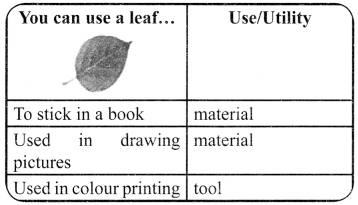JAC Board Class 8th Social Science Notes History Chapter 4 Tribals, Dikus and the Vision of a Golden Age
→ In 1895, a man named Birsa was seen roaming the forests and villages of Chottanagpur in Jharkhand.
- Birsa himself declared that God had appointed him to save his people from trouble, free them from the slavery of dikus (outsiders).
- Birsa was bom in a family of Mundas , a tribal group that lived in Chottanagpur. But his followers included other tribals of the region – Santhals and Oraons.
→ How Did Tribal Groups Live?
By the nineteenth century, tribal people in different parts of India were involved in a variety of activities.
![]()
→ Some were jhum cultivators
- Jhum cultivation means shifting cultivation. This was done on small patches of land mostly in forests.
- The cultivators cut the treetops to allow sunlight to reach the ground and burnt the vegetation on the land to clear it for cultivation. They spread the ash from the firing which contained potash to fertilise the soil.
- Once the crop was ready and harvested, they moved to another field. A field that had been cultivated once was left fallow for several years.
- Shifting cultivators were found in the hilly and forested tracts of north-east and central India. The lives of these tribal people depended on free movement within forests and on being able to use the land and forests for growing their crops.
→ Some were hunters and gatherers
- In many regions tribal groups lived by hunting animals and gathering forest produce.
- The Khonds were such a community living in the forests of Odisha. They regularly went out on collective hunts and then divided the meat amongst themselves.
- They ate fruits and roots collected from the forest and cooked food with the oil they extracted from the seeds of the sal and mahua.
- The local weavers and leather workers turned to the Khonds when they needed supplies of kusum and palash flowers to colour their clothes and leather.
- At times they exchanged goods, getting what they needed in return for their valuable forest produce. At other times they bought goods with the small amount of earnings they had.
- • When supplies of forest produce shrank, tribal people had to increasingly wander around in search of work as labourers. But many of them such as the Baigas of central India were reluctant to do work for others.
- for the tribals, market and commerce often meant debt and poverty. They therefore came to see the moneylender and trader as evil outsiders and the cause of their misery.
→ Some herded animals
- Many tribal groups lived by herding and rearing animals. They were pastoralists who moved with their herds of cattle or sheep according to the seasons.
- The Van Gujjars of the Punjab hills and the Labadis of Andhra Pradesh were cattle herders, the Gaddis of Kulu were shepherds, and the Bakarwals of Kashmir reared goats.
![]()
→ Some took to settled cultivation
- Even before the nineteenth century, many from within the tribal groups had begun settling down and cultivating their fields in one place year after year.
- Most of the tribes had rights on the land • such as the Mundas of Chottanagpur had the
land which belonged to the clan as a whole. All members of the clan were regarded as descendants of the original settlers, who had first cleared the land. - Powerful men often rented out their land instead of cultivating it themselves.
- British officials saw settled tribal groups such as the Gonds and Santhals as more civilised than hunter gatherers or shifting cultivators. Those who lived in the forests were considered to be wild and savage, they needed to be settled and civilised.
→ How Did Colonial Rule Affect Tribal Lives?
The lives of tribal groups changed during British rule.
→ What happened to tribal chiefs?
- Before the arrival of the British, in many areas the tribal chiefs were important people. They enjoyed a certain amount of economic power and had the right to administer and control their territories.
- Tribals, Dikus and the Vision of a Golden Age of the tribal chiefs changed considerably.
- They also had to pay tribute to the British and discipline the tribal groups on behalf of the British. They lost the authority they had earlier enjoyed amongst their people and were unable to fulfil their traditional functions.
→ What happened to the shifting cultivators?
- The British were uncomfortable with groups who moved about and did not have a fixed home. They wanted tribal groups to settle down and become peasant cultivators.
- The British wanted a regular revenue source for the state. So, they introduced land settlements which means they measured the land, defined the rights of each individual to that land and fixed the revenue demand for the state.
- The British effort to settle jhum cultivators was not very successful.
- Jhum cultivators who took to plough cultivation often suffered since their fields did not produce good yields. So, the jhum cultivators in north-east India insisted on continuing with their traditional practice.
→ Forest laws and their impacts
- Changes in forest laws had a considerable effect on tribal lives.
- The British extended their control over all forests and declared that forests were state property.
- Some forests were classified as Reserved Forests for they produced timber which the British wanted. In these forests people were not allowed to move freely, practice jhum cultivation.
- Once the British stopped the tribal people from living inside forests, they faced a problem.
- In many regions the Forest Department established forest villages to ensure a regular supply of cheap labour.
- The Colonial Officials decided that they would give jhum cultivators small patches of land in the forests and allow them to cultivate these on the condition that those who lived in the villages would have to provide labour to the Forest Department and look after the forests.
- Many tribal groups reacted against the colonial forest laws. The revolt of Songram Sangma in 1906 in Assam and the forest satyagraha of the 1930s in the Central Provinces took place.
→ The problem with trade
- During the nineteenth century, tribal groups found that traders and moneylenders were coming into the forests more often wanting to buy forest produce offering cash loans and asking them to work for wages.
- It took tribal groups some time to understand the consequences of what was happening.
- Many tribal groups saw the market and the traders as their main enemies.
→ The search for work
- The plight of the tribals who had to go far away from their homes in search of work was even worse.
- Tribals were recruited in large numbers to work the tea plantations of Assam and the coal mines of Jharkhand.
- They were recruited through contractors who paid them miserably low wages and prevented them from returning home.
![]()
→ A Closer Look
- Through the nineteenth and twentieth centuries, tribal groups in different parts of the country rebelled against the changes in laws, the restrictions on their practices, the new taxes they had to pay and the exploitation by traders and moneylenders.
- The Kols rebelled in 1831-32, Santhals rose in revolt in 1855, the Bastar Rebellion in central India broke out in 1910 and the Warli Revolt in Maharashtra in 1940.
→ Birsa Munda
- Birsa was bom in the mid-1870s. The son of a poor father, he grew up around the forests of Bohonda, grazing sheep, playing the flute, and dancing in the local akhara.
- Birsa heard tales of the Munda uprisings of the past and saw the sirdars (leaders) of the community urging the people to revolt.
- Birsa went to the local missionary school and listened to the sermons of missionaries. There too he heard it said that it was possible for the Mundas to attain the Kingdom of Heaven and regain their lost rights.
- Birsa also spent some time in the company of a prominent Vaishnav preacher. He wore the sacred thread and began to value the importance of purity and piety.
- His movement was aimed at reforming tribal society. He urged the Mundas to give up drinking liquor, clean their village and stop believing in witchcraft and sorcery. He also turned against missionaries and Hindu landlords.
- In 1895, Birsa urged his followers to recover their glorious past. He talked of a golden age in the past, a satyug (the age of truth) where Mundas lived a good life, constructed embankments, tapped natural springs, planted trees and orchards, practised cultivation to earn their living.
- British officials were worried most about the political aim of the Birsa movement. The movement identified all these forces as the cause of the misery the Mundas were suffering.
- British arrested Birsa in 1895, convicted him on charges of rioting and jailed him for two years.
When Birsa was released in 1897 he began touring the villages to gather support. He used traditional symbols and language to rouse people, urging them to destroy “Ravana” (dikus and the Europeans) and establish a kingdom under his leadership. - Birsa’s followers raised the white flag as a symbol of Birsa Raj.
- In 1900 Birsa died of cholera and the movement faded out.
- The movement was significant in at least two ways. First – it forced the colonial government to introduce laws so that the land of the tribals could not be easily taken over by dikus. Second – it showed once again that the tribal people had the capacity to protest against injustice and express their anger against colonial rule.











